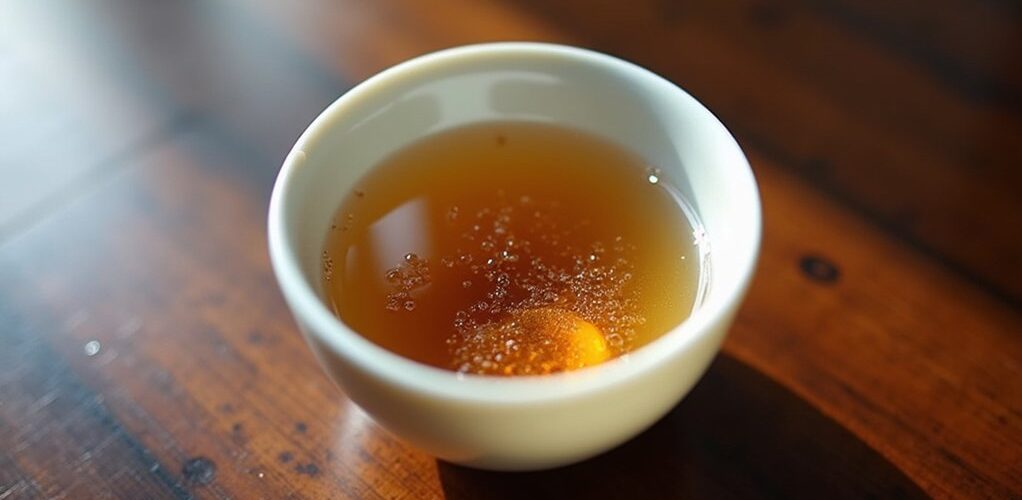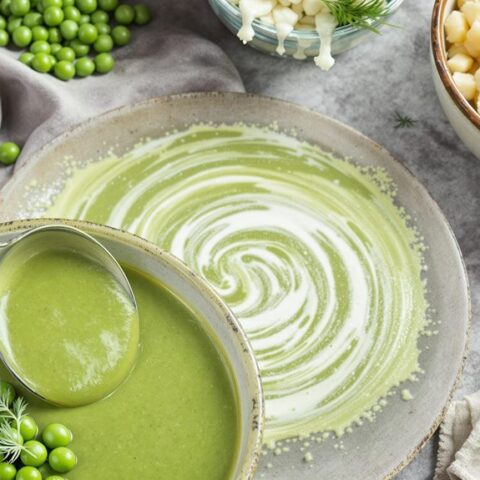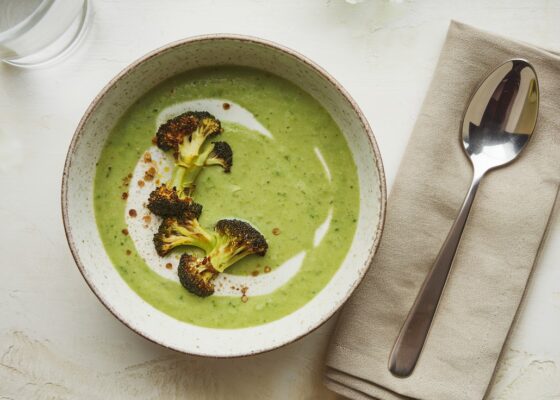
Sake contains moderate carbohydrate levels, with dry varieties offering better options for low-carb diets. Different types vary greatly, from honjozo at 7 grams per 5-ounce serving to sweeter nigori varieties reaching 12 grams. The sake meter value (SMV) helps identify lower-carb options, with positive values indicating less residual sugar. For those monitoring carbohydrate intake, portion control and choosing drier varieties remain essential. Understanding sake's distinct varieties reveals the best choices for health-conscious consumers.
Key Takeaways
- Sake contains moderate carbs at 1.46 grams per fluid ounce, with dry varieties offering lower carb options than sweet ones.
- Honjozo sake has the lowest carb content at 7 grams per 5-ounce serving, making it suitable for low-carb diets.
- Standard sake serving of 4 ounces contains about 5.7 grams of carbs, less than beer but more than zero-carb spirits.
- Choose sake with positive Sake Meter Values (SMV) to ensure lower residual sugar content and fewer carbohydrates.
- Sake's high glycemic index of 70 can affect blood sugar levels, so portion control is essential for carb-conscious drinkers.
Understanding Sake's Carbohydrate Content
When evaluating sake's compatibility with a low-carb lifestyle, understanding its carbohydrate content becomes essential for making informed dietary choices.
Sake contains approximately 1.46 grams of net carbs per fluid ounce, placing it among the lower-carb options in alcoholic beverages. Different types of sake offer varying carbohydrate content, with clear varieties like junmai and honjozo containing 6 to 10 grams per 5-ounce serving, while sweeter options such as nigori can reach up to 12 grams.
For those following a low-carb diet, the sake meter value (SMV) serves as a valuable indicator of residual sugar content. A positive SMV suggests lower carbohydrate levels, making these varieties more suitable for those monitoring their carb intake.
Types of Sake and Their Carb Levels
Different types of sake offer varying carbohydrate levels, with dry varieties generally containing fewer carbs than their sweeter counterparts.
Premium sakes like Honjozo present the lowest carb content at 7 grams per 5-ounce serving, while Nigori sake contains the highest at 11-12 grams for the same volume.
The middle ground is occupied by refined options such as Ginjo and Daiginjo, which contain 8-9 grams of carbs per serving, making them moderate choices for carb-conscious consumers.
Dry Vs Sweet Varieties
Understanding the carbohydrate content in sake requires careful attention to the distinction between dry and sweet varieties.
Dry sake options like Junmai and Daiginjo typically contain lower carb levels, with Junmai providing 6-8 grams of carbs per 5-ounce serving, while Daiginjo contains 8-9 grams. These varieties are particularly suitable for those following a low-carb diet.
Sweeter sake varieties, particularly Nigori, demonstrate significantly higher carb content, reaching 11-12 grams per 5 ounces due to the presence of sake lees.
The sake meter value (SMV) serves as a useful indicator for determining sweetness levels, with positive values signifying drier varieties containing lower residual sugars.
Those monitoring their carbohydrate intake should prioritize dry sake options while avoiding sweeter variants to maintain their dietary goals effectively.
Premium Sake Carb Content
Premium sake varieties exhibit distinct carbohydrate profiles that greatly impact their suitability for low-carb dietary preferences.
Honjozo sake emerges as the most suitable option for those following a ketogenic lifestyle, containing approximately 7 grams of carbs per 5-ounce serving.
Junmai sake follows with 9-10 grams, while Ginjo sake contains 8-9 grams of carbohydrates per serving, offering a balanced choice for moderate carb consumers.
For those strictly monitoring their carb intake, dry sake varieties with higher sake meter values (SMV) provide better options.
However, individuals should approach Nigori sake with caution, as its sweeter, cloudier nature results in the highest carb content at 11-12 grams per serving, making it less compatible with low-carb dietary goals.
Comparing Sake to Other Alcoholic Beverages
When examining alcoholic beverages for their carbohydrate content, sake emerges as a moderate option with 1.46 grams of net carbs per fluid ounce, positioning it between zero-carb spirits and higher-carb beers.
Popular cocktail alternatives often contain significant hidden carbs from mixers and sweeteners, while sake can be enjoyed straight or with minimal additions, making it an appealing choice for carb-conscious drinkers.
Understanding sake's carb content relative to other alcoholic beverages helps individuals make informed decisions, particularly noting that dry sake varieties contain fewer carbohydrates than sweet wines or beer-based drinks.
Popular Low-Carb Drink Options
Although sake remains a popular choice among low-carb drinkers, it falls in the middle range when compared to other alcoholic beverages in terms of carbohydrate content.
For those following a ketogenic diet or seeking low-carb options, several alternatives offer fewer carbohydrates than drinking sake. Vodka stands out as a zero-carb option, while dry wines typically contain 3-4 grams of carbs per glass.
Dry sake varieties, such as junmai and honjozo, provide moderate carb content with approximately 6-8 grams per 5-ounce serving.
When comparing alcoholic beverages, sake's 1.46 grams of net carbs per fluid ounce places it between wine's 2.6 grams per 100 milliliters and beer's higher 12 grams per 12-ounce serving, making it a reasonable choice for carb-conscious consumers.
Understanding Sake's Carb Content
Understanding sake's carbohydrate content requires careful comparison with other popular alcoholic beverages. With 1.46 grams of net carbs per fluid ounce, sake emerges as a favorable low-carb option for mindful drinkers. Dry sake types, particularly those with high sake meter values, offer even lower carbohydrate content.
| Beverage Type | Carbs per Serving |
|---|---|
| Junmai Sake | 6-8g per 5oz |
| Red Wine | 2.6g per 100ml |
| Beer | 12g per pint |
| Sweet Cocktails | 20-30g per drink |
When examining carb content across alcoholic beverages, sake stands out as a moderate choice. While not the lowest in carbohydrates, it provides a reasonable middle ground, especially when selecting specific varieties like junmai or honjozo, which contain fewer carbs than standard options.
Cocktail Alternative Carb Counts
Many popular cocktails pack a hefty carbohydrate punch, making sake an appealing alternative for those watching their carb intake.
When comparing alcoholic drink options, sake's moderate carb content of 1.46 grams of net carbs per fluid ounce positions it favorably against sweet mixed drinks, which often contain considerably more carbohydrates due to sugary mixers.
While sake isn't the lowest-carb beverage available, as zero-carb options like vodka and whiskey exist, it remains a reasonable choice for those maintaining a healthy diet.
At 9-12 grams of carbohydrates per 5-ounce serving, sake contains fewer carbs than beer, which typically has 12 grams per pint.
Those following strict low-carb diets should drink carefully and consider alternatives like light beer or spirits, which offer lower carbohydrate counts per serving.
Best Low-Carb Sake Options
Several excellent low-carb sake options exist for those watching their carbohydrate intake, with Junmai and Honjozo varieties leading the way at just 6-10 grams per 5-ounce serving. For best low-carb choices, consumers should look for sake types with high sake meter values (SMV), such as Michinoku Onikoroshi Honjozo (+10) and Suigei Tokubetsu Junmai (+7), which indicate lower residual sugars. Dry sake varieties consistently offer lower carbohydrate content than their sweeter counterparts, making them perfect for carb-conscious drinkers. A standard serving size of 4 ounces contains approximately 5.7 grams of carbs, while specific options like Kariho Namahage prove particularly suitable for those following ketogenic diets, allowing for moderate enjoyment without exceeding daily carbohydrate limits. Adhering to a low carbohydrate intake can help maintain ketosis, supporting the body's ability to burn fat more effectively.
Planning Your Sake Portions
To maintain a low-carb lifestyle while enjoying sake, careful portion planning becomes essential for managing daily carbohydrate intake. With standard servings containing 5.7 grams of carbohydrates, understanding proper portion control helps individuals stay within their desired carb limits, especially on a keto diet.
- Measure servings precisely, limiting portions to 1-2 fluid ounces to minimize carb impact.
- Select higher SMV types of sake, such as Michinoku Onikoroshi Honjozo, for reduced sugar content.
- Account for sake's carbohydrates when planning meals to maintain overall daily carb goals.
- Keep a detailed log of sake consumption to guarantee adherence to carb restrictions.
Consistent tracking of both portion sizes and carb intake enables sake enthusiasts to enjoy this traditional beverage while maintaining their low-carb lifestyle goals effectively. Additionally, it is important to improve insulin sensitivity through a balanced diet to further support blood sugar management.
Health Benefits and Drawbacks of Sake
While sake contains antioxidant compounds that may offer some protective benefits, its high glycemic index of 70 can greatly impact blood sugar levels, making it a concern for those monitoring their glucose.
The low carbohydrate content of sake makes it a potentially suitable option for weight management when consumed in moderation, though its alcohol content can still contribute to overall caloric intake.
Despite its minimal nutritional value, choosing drier sake varieties can help individuals balance their desire to enjoy the beverage while maintaining their health goals.
Sake's Antioxidant Properties
Similar to red wine, sake contains beneficial antioxidants that make it more than just an alcoholic beverage. Through the fermentation process, sake develops significant levels of phenolic compounds, which play an essential role in reducing oxidative stress and inflammation in the body.
These compounds contribute to various health benefits, particularly in supporting cardiovascular health.
- Reduces oxidative stress through naturally occurring antioxidants
- Improves blood circulation and heart health
- Contains phenolic compounds enhanced by fermentation
- May help decrease inflammation in the body
While sake's antioxidant properties offer potential health advantages comparable to those found in red wine, it's essential to approach consumption with moderation.
The benefits of these compounds can be overshadowed by the negative effects of excessive alcohol intake, including increased caloric consumption and disrupted glucose metabolism.
Effects on Blood Sugar
Understanding sake's effects on blood sugar levels requires careful consideration for those monitoring their glucose intake. While sake contains relatively low sugar levels compared to other alcoholic beverages, its carbohydrate content can greatly impact blood glucose regulation.
With a glycemic index of 70, sake can trigger rapid blood sugar spikes, particularly when consumed in larger quantities. A standard 5-ounce serving contains 9-12 grams of carbs, which may disrupt ketosis for individuals following low-carb diets. This carbohydrate content, though modest, can accumulate quickly through multiple servings.
Those with diabetes or blood sugar concerns should approach sake consumption with moderation. Despite its lower carb profile among alcoholic beverages, sake's potential to affect glucose levels warrants mindful consumption and careful monitoring.
Weight Management Impact
Managing weight effectively requires careful evaluation of sake consumption, as its carbohydrate and caloric content can considerably impact dietary goals.
While sake is relatively low in carbs compared to other alcoholic beverages, its effects on blood sugar and overall caloric intake warrant attention for those pursuing weight management goals.
Key factors to reflect on when incorporating sake into a low carb or keto lifestyle:
- Standard 5-ounce servings contain 9-12 grams of carbohydrates.
- Portion control is essential, with 1-2 fluid ounces being ideal for carb management.
- High glycemic index of 70 can affect blood sugar levels and weight loss efforts.
- Junmai sake delivers 150-200 calories per 6 ounces, requiring careful monitoring for calorie-conscious individuals.
Tips for Mindful Sake Consumption
Although sake can fit into a low-carb lifestyle, mindful consumption remains essential for maintaining dietary goals and overall health. For those following a ketogenic diet, understanding sake's net carbs and implementing strategic consumption practices can help maintain ketosis while enjoying this traditional beverage. Regular tracking of sake intake helps guarantee adherence to low-carb goals, while selecting dry varieties minimizes carbohydrate impact. When consuming sake, moderation is key, and pairing with appropriate low-carb foods can help maintain blood sugar stability and support overall dietary success. A ketogenic diet greatly reduces blood glucose levels, helping to stabilize HbA1c and improve overall metabolic health.
Pairing Sake With Low-Carb Foods
When exploring low-carb dining options, pairing sake with appropriate foods can enhance both the dining experience and adherence to dietary goals. The versatility of sake allows it to complement various protein-rich and low-carb dishes, creating satisfying meal combinations that maintain dietary restrictions.
- Pair sake with grilled fish or chicken to enhance the natural flavors while keeping carbohydrate content minimal.
- Serve alongside high-fiber vegetables and leafy greens for a balanced, nutritious meal.
- Combine with soy sauce or miso-seasoned dishes for complementary flavors without adding significant carbs.
- Match dry sake varieties with keto-friendly options like fatty fish, avocado, or cheese platters.
Including seafood such as shrimp or fatty fish like salmon with sake can further enrich the meal, as these options are low in carbs and high in essential nutrients.
These thoughtful pairings guarantee that sake consumption aligns with low-carb dietary goals while maximizing flavor and enjoyment.
Choosing the Right Sake for Your Diet
Selecting the right sake for a low-carb diet requires careful consideration of several key factors, from brewing methods to sugar content.
Dry varieties like Junmai and Honzonzo are ideal choices, containing approximately 6-8 grams of carbs per 5-ounce serving. When evaluating options, consumers should look for sake with a high sake meter value (SMV), as this indicates lower residual sugars.
While maneuvering through sake selections, it's important to avoid Nigori sake, which contains markedly higher carb content at 11-12 grams per serving.
Instead, focus on clear sake varieties with lower carb profiles. Since nutritional profiles aren't always readily available, understanding these basic principles of sake classification helps make informed choices that align with low-carb diet goals.
Reading Sake Labels for Carb Content
Reading sake labels requires a specific understanding of their unique labeling system to identify lower-carb options. Unlike many alcoholic beverages, sake labels typically lack mandatory nutritional information, making it essential to know what indicators suggest lower carb content.
- Look for the sake meter value (SMV) on labels – positive numbers indicate fewer residual sugars.
- Clear sake varieties, particularly junmai and honjozo, typically contain 6-10g carbs per 5-ounce serving.
- Avoid nigori sake when counting carbs, as it contains 11-12g per serving due to sake lees.
- Select dry varieties over sweet ones, as they generally have lower carb content.
Understanding these label elements helps consumers make informed choices about sake consumption while managing their carbohydrate intake effectively.
Making Smart Sake Choices at Restaurants
Diners seeking to maintain a low-carb lifestyle can navigate restaurant sake menus successfully by understanding a few key principles about sake selection.
When ordering this traditional Japanese drink, opt for dry varieties like Junmai or Honjozo, which contain fewer carbohydrates than their sweeter counterparts.
Ask servers about the sake meter value (SMV), as higher positive numbers indicate lower carb content. Be particularly cautious with sweeter types like Nigori, which can pack up to 12 grams of carbs per 5-ounce serving.
Practice moderation by being mindful of portion sizes, and consider pairing sake with low-carb foods such as sashimi or grilled meats to maintain balance.
Understanding these factors helps diners make informed choices while enjoying sake within their dietary parameters.
Frequently Asked Questions
Is Sake Low Carb?
Different sake types contain moderate carbohydrate levels, with dry varieties from traditional brewing regions having fewer carbs. Health-conscious drinkers can enjoy sake servings mindfully while savoring diverse flavors and pairing options.
What Is the Best Alcohol With Less Carbs?
Pure spirits like vodka and whiskey contain zero carbs. Low carb beers, dry wine options, and keto-friendly drinks offer minimal carbohydrates. When carb counting, clear spirits with sugar-free mixers remain the ideal choice.
Is Sake Ok for Diet?
Sake can fit into a diet when consumed moderately. Its fermentation process yields relatively low carbs compared to other alcohols. Following dietary guidelines of 5-ounce servings helps maintain health benefits while supporting weight management goals.
Does Sake Have a Lot of Sugar in It?
Sake contains minimal sugar due to its fermentation process converting most sugars into alcohol. Standard sake averages 1.5g carbs per ounce, with dry varieties containing even less, making it relatively low-sugar compared to other alcoholic beverages.
Conclusion
While sake can be enjoyed as part of a low-carb lifestyle, mindful consumption is essential. Selecting drier varieties, monitoring portion sizes, and understanding sake labels helps maintain carbohydrate goals while savoring this traditional Japanese beverage. By choosing the right type, pairing it with appropriate foods, and tracking intake carefully, sake enthusiasts can incorporate this drink into their dietary plans without compromising their nutritional objectives.










No Comments